Unit 5 Revealing nature Developing idea课件-(共38张PPT)高中英语外研版(2019)选择性必修第一册
文档属性
| 名称 | Unit 5 Revealing nature Developing idea课件-(共38张PPT)高中英语外研版(2019)选择性必修第一册 | 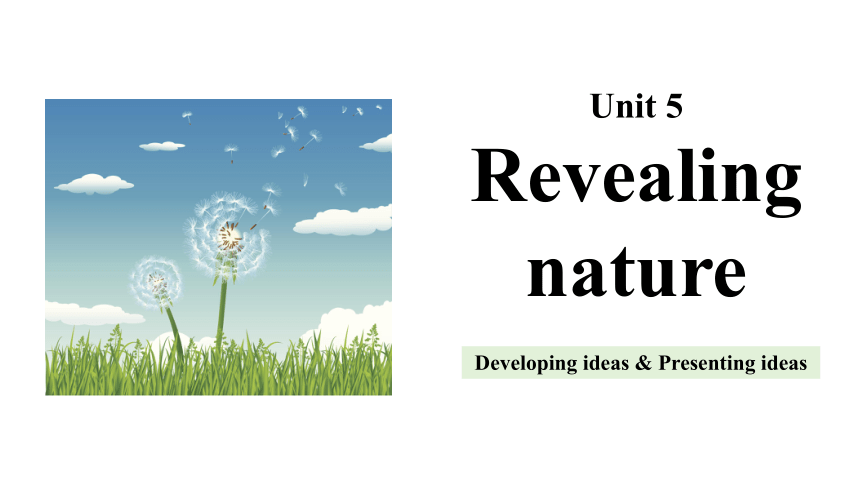 | |
| 格式 | pptx | ||
| 文件大小 | 37.5MB | ||
| 资源类型 | 教案 | ||
| 版本资源 | 外研版(2019) | ||
| 科目 | 英语 | ||
| 更新时间 | 2025-06-19 17:01:15 | ||
图片预览

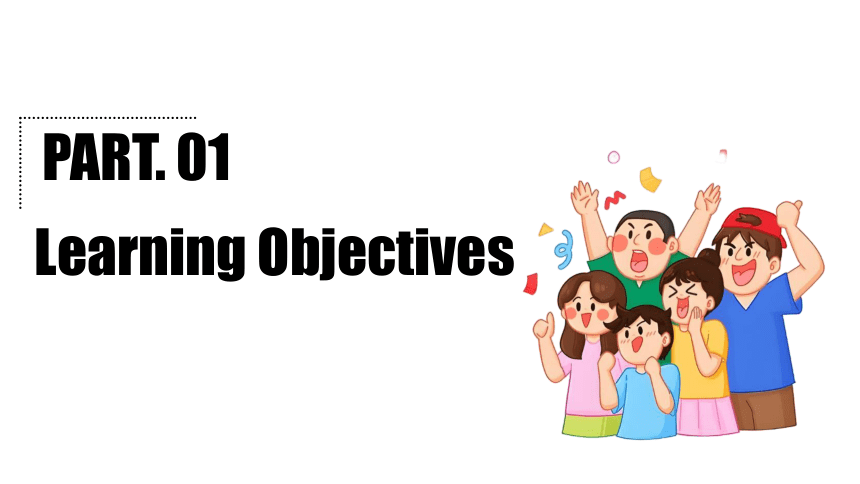
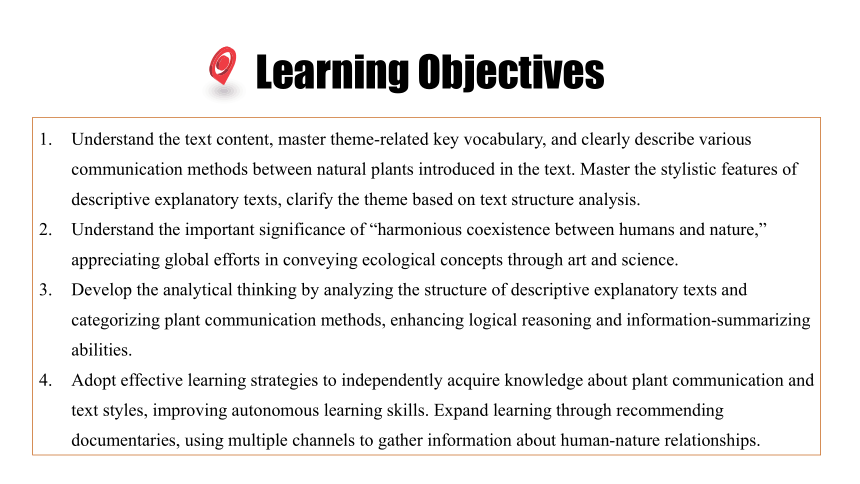

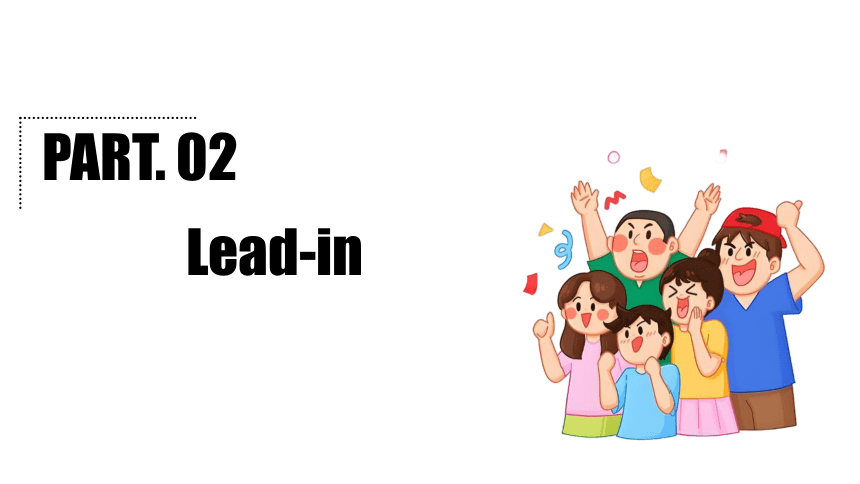
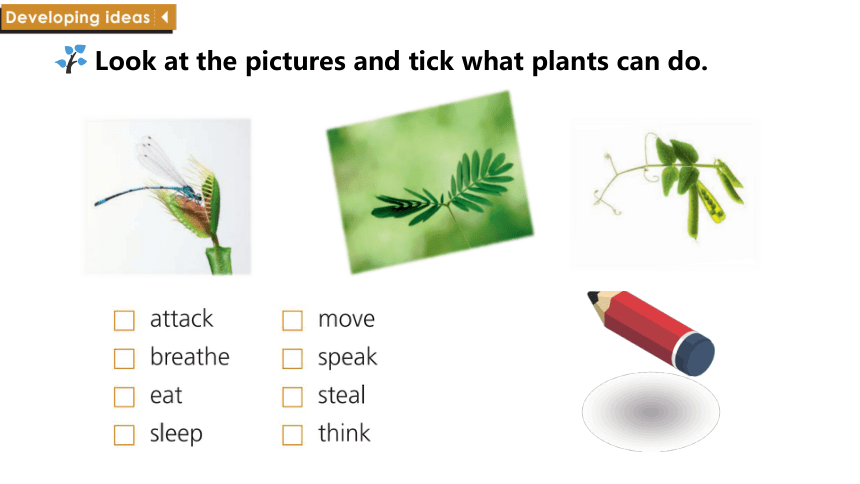
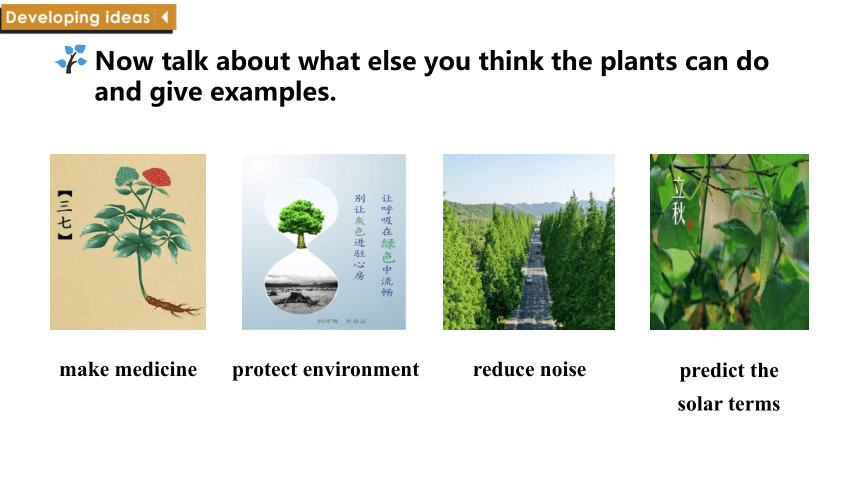
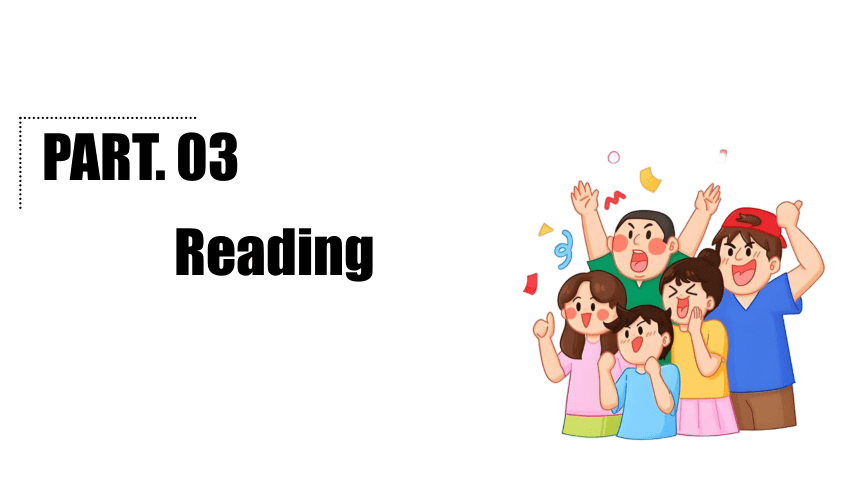
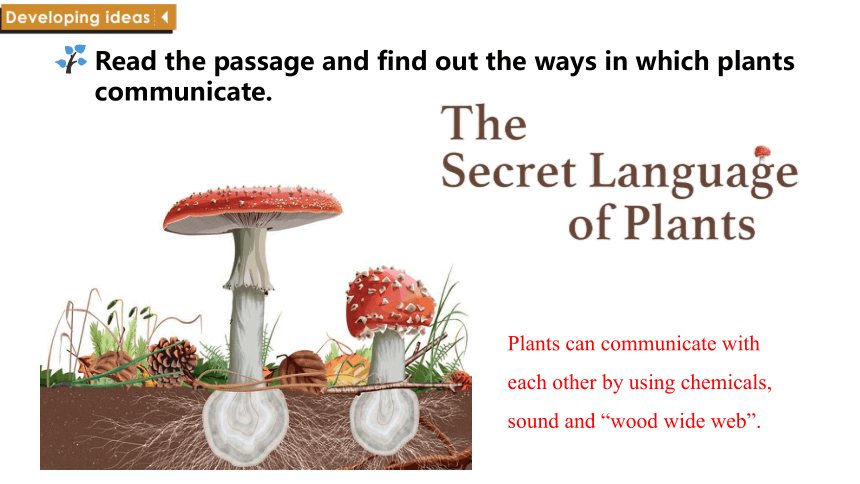
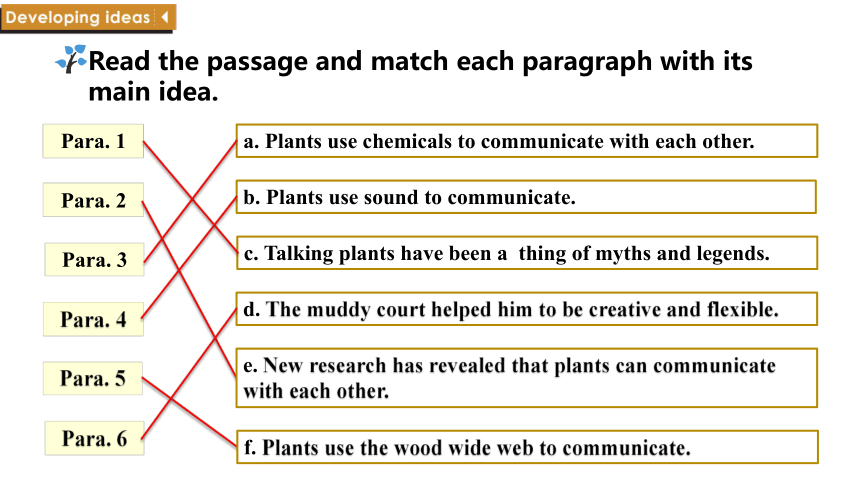
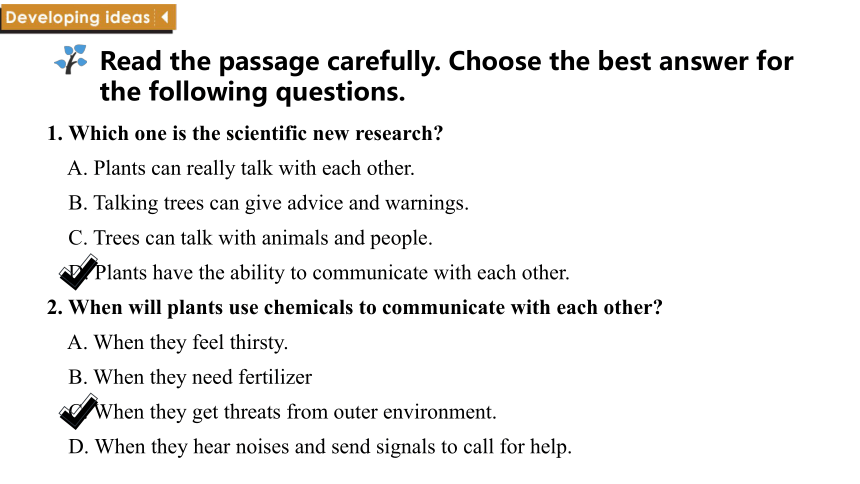
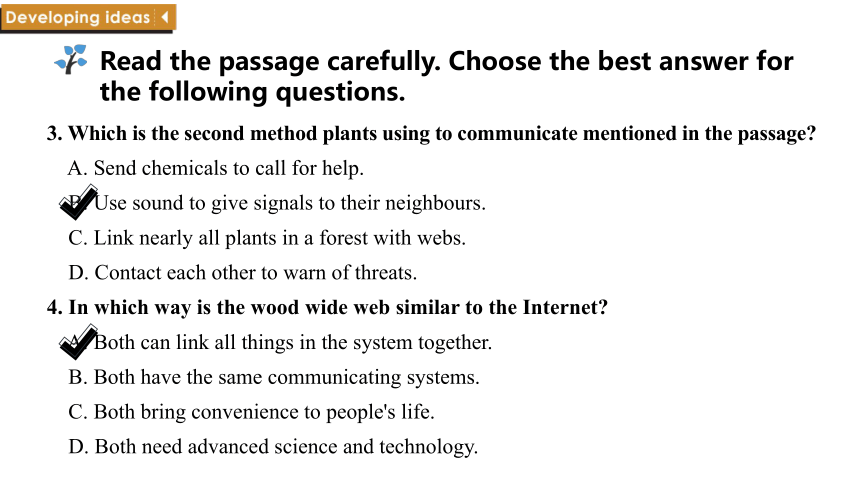
文档简介
(共38张PPT)
Developing ideas & Presenting ideas
Unit 5
Revealing
nature
Learning Objectives
PART. 01
Understand the daily study and life of British middle school students by watching videos. Based on your own daily study and life, compare the study and life in Chinese and British schools, and find out the similarities and differences between the two. Talk about your first impression of high school life, and have a preliminary perception of the study and life in the senior high school stage.
Learning Objectives
Understand the text content, master theme-related key vocabulary, and clearly describe various communication methods between natural plants introduced in the text. Master the stylistic features of descriptive explanatory texts, clarify the theme based on text structure analysis.
Understand the important significance of “harmonious coexistence between humans and nature,” appreciating global efforts in conveying ecological concepts through art and science.
Develop the analytical thinking by analyzing the structure of descriptive explanatory texts and categorizing plant communication methods, enhancing logical reasoning and information-summarizing abilities.
Adopt effective learning strategies to independently acquire knowledge about plant communication and text styles, improving autonomous learning skills. Expand learning through recommending documentaries, using multiple channels to gather information about human-nature relationships.
Understand the daily study and life of British middle school students by watching videos. Based on your own daily study and life, compare the study and life in Chinese and British schools, and find out the similarities and differences between the two. Talk about your first impression of high school life, and have a preliminary perception of the study and life in the senior high school stage.
Teaching Focuses and Anticipated Difficulties
Through reading, students can master theme-related vocabulary and describe different communication ways between plants in the text, while understanding the structure of descriptive explanatory texts.
Analyzing the structure of descriptive explanatory texts to clarify the theme and understanding the cultural significance of “harmonious coexistence between humans and nature”.
Lead-in
PART. 02
Look at the pictures and tick what plants can do.
Now talk about what else you think the plants can do and give examples.
make medicine
protect environment
reduce noise
predict the solar terms
Reading
PART. 03
Read the passage and find out the ways in which plants
communicate.
Plants can communicate with each other by using chemicals, sound and “wood wide web”.
Read the passage and match each paragraph with its main idea.
Para. 1
Para. 3
Para. 4
Para. 2
a. Plants use chemicals to communicate with each other.
b. Plants use sound to communicate.
c. Talking plants have been a thing of myths and legends.
d. The muddy court helped him to be creative and flexible.
e. New research has revealed that plants can communicate with each other.
Para. 5
f. Plants use the wood wide web to communicate.
Para. 6
Read the passage carefully. Choose the best answer for the following questions.
1. Which one is the scientific new research
A. Plants can really talk with each other.
B. Talking trees can give advice and warnings.
C. Trees can talk with animals and people.
D. Plants have the ability to communicate with each other.
2. When will plants use chemicals to communicate with each other
A. When they feel thirsty.
B. When they need fertilizer
C. When they get threats from outer environment.
D. When they hear noises and send signals to call for help.
Read the passage carefully. Choose the best answer for the following questions.
3. Which is the second method plants using to communicate mentioned in the passage
A. Send chemicals to call for help.
B. Use sound to give signals to their neighbours.
C. Link nearly all plants in a forest with webs.
D. Contact each other to warn of threats.
4. In which way is the wood wide web similar to the Internet
A. Both can link all things in the system together.
B. Both have the same communicating systems.
C. Both bring convenience to people's life.
D. Both need advanced science and technology.
Organise information from the passage and complete the diagram.
communicate with each other
from the leaves
release its own, different chemicals
with their roots
clicking noises when there is not enough water, indicating drought is arriving
the roots of different plants to each other
share information and even food
steal food from each other, or
spread poisons
tell if a neighbouring plant is helpful, or unfriendly
Think & share
1. What figure of speech is being used when the plants are described as calling for help What is its function Do you know of any artworks created mainly by technology
Personification. It can make descriptions more vivid.
Think & share
2. What does “wood wide web” mean
“Wood wide web” means an amazing system of communication that can link nearly every plant in a forest. It is linked underground by fungi and this fungal network links the roots of different plants to each other. Using the wood wide web, plants can share information and even food with each other.
Think & share
3. What do you think are the benefits of studying plant communication
4. What discoveries are described in the two reading passages in this unit and what do their meanings have in common
Passage 1 reveals the discovery of evolution and Passage 2 reveals the discovery of communication between plants. They all reflect that there are numerous secrets in nature that remain to be explored.
Work in groups. Give a talk about communication between living things.
What other ways can you think of
1. Read the passage again and talk about how plants communicate.
2. Think about and discuss the following ways of communication in the animal world.
Bees “dance” to signal to other bees that they have found food.
Ants communicate with each other through touch, chemical signals, moving their bodies and even using their legs to make sounds.
Work in groups. Give a talk about communication between living things.
3. Organise your ideas following the steps below.
Begin with what living things you have chosen to talk about.
Explain how they communicate and give examples.
Conclude by explaining what we have learnt from their behaviour.
4. Give a talk to the class about communication between living things.
Now talk about how well you contributed to your group discussion and help each other to make improvements.
Vocabulary
1. root
rooted adj. 根源在于;根深蒂固的
take root 扎根;深入人心
be rooted in 根植于
例题:
Her belief in kindness is so ________(root) that she always helps others without hesitation.
rooted
Vocabulary
2. link
link... to/with... 把……与……联系/连接起来
link sb./sth. together 把……联系/连接在一起
be linked to/with 与……有关
a/the link between... (and...) (……与)……之间的联系
have strong links with... 和……关系牢固
例题:
This study links early childhood education _______ improved cognitive abilities in adulthood.
with
Writing
PART. 04
Sunday 20 October
Needs of plants.
Sunday 20 October
Read the observational journal and answer the questions.
1. How were the daffodil bulbs planted
They were planted side by side in soil, with the pointed ends facing up.
2. In what environment did the leaves grow
The leaves grew in a sunny, but cool place.
3. What do the flowers look like
The flowers are yellow and white, and shaped like trumpets.
Sunday 20 October
Work in pairs. Look at the pictures and talk about how the sunflower grows.
Now write your observational journal about the sunflower.
Sunday 20 October
How to write the observational journal
Paragraph 1: time, the way to plant, environment, the special requirement
Paragraph 2: time, sprout, shape and texture, environment
Paragraph 3: time, height, colour and shape
Sunday 20 October
Common expressions for observational journal about plant.
1. 种植及发芽阶段:
... has/have been planted in soil (a pot/flowerpot/flowerbed/...)
... need(s) watering regularly.
I water it every three days.
It is necessary to keep the soil damp/ put them in the shade/ put them in a cool place/...
The seed sprouts two days after...
Sunday 20 October
2. 生长发育阶段:
New leaves sprout from the stem.
A flower bud is growing at the top of the stem.
A bud gradually becomes a flower.
The roots grow deeper into the soil.
3. 成熟、结果阶段:
Each stem produces a single flower.
As time goes by, it goes/ runs to seed.
... grow(s) taller and stronger...
The white flowers have fallen from the stem.
Common expressions for observational journal about plant.
Sunday 20 October
Work in pairs. Make improvements to each other’s observational journals and share them with the class.
An observational journal about the sunflower
1 June
Covered with 1-2 cm of moist soil, the sunflower seed takes a few days to come up after being planted. Water has been added regularly and the hard seed coat softens in the damp soil to allow the first root to pierce downwards and the first leaves to push to the soil surface.
6 July
The root continues to grow downwards. The single stem grows hollow and smooth, revealing large spade-shaped leaves from the growing tip. Gradually, the plant’s growing tip reveals the first hints of development of the flower bud. The plant stem becomes more woody.
26 July
About three weeks after the flower bud first becomes visible at the tip of the sunflower stem. It enlarges and begins to reveal a flattened disc. Over the course of one week, the yellow ray florets, and disc florets bloom across the core of the sunflower blossom. It is yellow, looking beautiful.
Sample
1 What form of art does each picture show
2 Have you ever come across them
Work in groups. Look at the information about the nature documentaries and answer the questions.
1. Can you guess what secrets of nature are revealed in these documentaries
2. What other nature documentaries have you watched Which one do you like most Give your reasons.
Choose one nature documentary you like and complete the notes.
Practise presenting information about your documentary. Consider the following:
1. the structure of your presentation
2. useful words, expressions and structures
Give your presentation
to the class.
Exercise
PART. 05
1. Dogs have a remarkable ability to d_______(察觉) the scent of endangered species in the wild.
2. The newly discovered insect has a body length of only 3 c___________(厘米), smaller than a fingernail.
3. Rising global temperatures may accelerate f________(真菌的) growth in polar regions, threatening local ecosystems.
4. In Chinese l________(神话), the goddess Nvwa created humans from clay and repaired the sky with multicolored stones.
Exercise: 单词拼写
etect
entimetres
ungal
egend
Exercise: 用所给短语的适当形式填空
1. His refusal to listen to others’ opinions slowly ____________ even his closest friends, leaving him with no one to rely on.
2. Students from different countries study ____________ in the international program, exchanging ideas and cultural perspectives.
3. The course covers mathematical theories ___________ practical applications in real-world problems.
4. Smartphones have improved communication efficiency _____________, but they also reduce face-to-face interactions among people.
drove away
side by side
as well as
in some ways
side by side in some ways drive away as well as
Homework
PART. 06
Polish your writing.
Complete the reflection section.
Homework
See you next class!
Developing ideas & Presenting ideas
Unit 5
Revealing
nature
Learning Objectives
PART. 01
Understand the daily study and life of British middle school students by watching videos. Based on your own daily study and life, compare the study and life in Chinese and British schools, and find out the similarities and differences between the two. Talk about your first impression of high school life, and have a preliminary perception of the study and life in the senior high school stage.
Learning Objectives
Understand the text content, master theme-related key vocabulary, and clearly describe various communication methods between natural plants introduced in the text. Master the stylistic features of descriptive explanatory texts, clarify the theme based on text structure analysis.
Understand the important significance of “harmonious coexistence between humans and nature,” appreciating global efforts in conveying ecological concepts through art and science.
Develop the analytical thinking by analyzing the structure of descriptive explanatory texts and categorizing plant communication methods, enhancing logical reasoning and information-summarizing abilities.
Adopt effective learning strategies to independently acquire knowledge about plant communication and text styles, improving autonomous learning skills. Expand learning through recommending documentaries, using multiple channels to gather information about human-nature relationships.
Understand the daily study and life of British middle school students by watching videos. Based on your own daily study and life, compare the study and life in Chinese and British schools, and find out the similarities and differences between the two. Talk about your first impression of high school life, and have a preliminary perception of the study and life in the senior high school stage.
Teaching Focuses and Anticipated Difficulties
Through reading, students can master theme-related vocabulary and describe different communication ways between plants in the text, while understanding the structure of descriptive explanatory texts.
Analyzing the structure of descriptive explanatory texts to clarify the theme and understanding the cultural significance of “harmonious coexistence between humans and nature”.
Lead-in
PART. 02
Look at the pictures and tick what plants can do.
Now talk about what else you think the plants can do and give examples.
make medicine
protect environment
reduce noise
predict the solar terms
Reading
PART. 03
Read the passage and find out the ways in which plants
communicate.
Plants can communicate with each other by using chemicals, sound and “wood wide web”.
Read the passage and match each paragraph with its main idea.
Para. 1
Para. 3
Para. 4
Para. 2
a. Plants use chemicals to communicate with each other.
b. Plants use sound to communicate.
c. Talking plants have been a thing of myths and legends.
d. The muddy court helped him to be creative and flexible.
e. New research has revealed that plants can communicate with each other.
Para. 5
f. Plants use the wood wide web to communicate.
Para. 6
Read the passage carefully. Choose the best answer for the following questions.
1. Which one is the scientific new research
A. Plants can really talk with each other.
B. Talking trees can give advice and warnings.
C. Trees can talk with animals and people.
D. Plants have the ability to communicate with each other.
2. When will plants use chemicals to communicate with each other
A. When they feel thirsty.
B. When they need fertilizer
C. When they get threats from outer environment.
D. When they hear noises and send signals to call for help.
Read the passage carefully. Choose the best answer for the following questions.
3. Which is the second method plants using to communicate mentioned in the passage
A. Send chemicals to call for help.
B. Use sound to give signals to their neighbours.
C. Link nearly all plants in a forest with webs.
D. Contact each other to warn of threats.
4. In which way is the wood wide web similar to the Internet
A. Both can link all things in the system together.
B. Both have the same communicating systems.
C. Both bring convenience to people's life.
D. Both need advanced science and technology.
Organise information from the passage and complete the diagram.
communicate with each other
from the leaves
release its own, different chemicals
with their roots
clicking noises when there is not enough water, indicating drought is arriving
the roots of different plants to each other
share information and even food
steal food from each other, or
spread poisons
tell if a neighbouring plant is helpful, or unfriendly
Think & share
1. What figure of speech is being used when the plants are described as calling for help What is its function Do you know of any artworks created mainly by technology
Personification. It can make descriptions more vivid.
Think & share
2. What does “wood wide web” mean
“Wood wide web” means an amazing system of communication that can link nearly every plant in a forest. It is linked underground by fungi and this fungal network links the roots of different plants to each other. Using the wood wide web, plants can share information and even food with each other.
Think & share
3. What do you think are the benefits of studying plant communication
4. What discoveries are described in the two reading passages in this unit and what do their meanings have in common
Passage 1 reveals the discovery of evolution and Passage 2 reveals the discovery of communication between plants. They all reflect that there are numerous secrets in nature that remain to be explored.
Work in groups. Give a talk about communication between living things.
What other ways can you think of
1. Read the passage again and talk about how plants communicate.
2. Think about and discuss the following ways of communication in the animal world.
Bees “dance” to signal to other bees that they have found food.
Ants communicate with each other through touch, chemical signals, moving their bodies and even using their legs to make sounds.
Work in groups. Give a talk about communication between living things.
3. Organise your ideas following the steps below.
Begin with what living things you have chosen to talk about.
Explain how they communicate and give examples.
Conclude by explaining what we have learnt from their behaviour.
4. Give a talk to the class about communication between living things.
Now talk about how well you contributed to your group discussion and help each other to make improvements.
Vocabulary
1. root
rooted adj. 根源在于;根深蒂固的
take root 扎根;深入人心
be rooted in 根植于
例题:
Her belief in kindness is so ________(root) that she always helps others without hesitation.
rooted
Vocabulary
2. link
link... to/with... 把……与……联系/连接起来
link sb./sth. together 把……联系/连接在一起
be linked to/with 与……有关
a/the link between... (and...) (……与)……之间的联系
have strong links with... 和……关系牢固
例题:
This study links early childhood education _______ improved cognitive abilities in adulthood.
with
Writing
PART. 04
Sunday 20 October
Needs of plants.
Sunday 20 October
Read the observational journal and answer the questions.
1. How were the daffodil bulbs planted
They were planted side by side in soil, with the pointed ends facing up.
2. In what environment did the leaves grow
The leaves grew in a sunny, but cool place.
3. What do the flowers look like
The flowers are yellow and white, and shaped like trumpets.
Sunday 20 October
Work in pairs. Look at the pictures and talk about how the sunflower grows.
Now write your observational journal about the sunflower.
Sunday 20 October
How to write the observational journal
Paragraph 1: time, the way to plant, environment, the special requirement
Paragraph 2: time, sprout, shape and texture, environment
Paragraph 3: time, height, colour and shape
Sunday 20 October
Common expressions for observational journal about plant.
1. 种植及发芽阶段:
... has/have been planted in soil (a pot/flowerpot/flowerbed/...)
... need(s) watering regularly.
I water it every three days.
It is necessary to keep the soil damp/ put them in the shade/ put them in a cool place/...
The seed sprouts two days after...
Sunday 20 October
2. 生长发育阶段:
New leaves sprout from the stem.
A flower bud is growing at the top of the stem.
A bud gradually becomes a flower.
The roots grow deeper into the soil.
3. 成熟、结果阶段:
Each stem produces a single flower.
As time goes by, it goes/ runs to seed.
... grow(s) taller and stronger...
The white flowers have fallen from the stem.
Common expressions for observational journal about plant.
Sunday 20 October
Work in pairs. Make improvements to each other’s observational journals and share them with the class.
An observational journal about the sunflower
1 June
Covered with 1-2 cm of moist soil, the sunflower seed takes a few days to come up after being planted. Water has been added regularly and the hard seed coat softens in the damp soil to allow the first root to pierce downwards and the first leaves to push to the soil surface.
6 July
The root continues to grow downwards. The single stem grows hollow and smooth, revealing large spade-shaped leaves from the growing tip. Gradually, the plant’s growing tip reveals the first hints of development of the flower bud. The plant stem becomes more woody.
26 July
About three weeks after the flower bud first becomes visible at the tip of the sunflower stem. It enlarges and begins to reveal a flattened disc. Over the course of one week, the yellow ray florets, and disc florets bloom across the core of the sunflower blossom. It is yellow, looking beautiful.
Sample
1 What form of art does each picture show
2 Have you ever come across them
Work in groups. Look at the information about the nature documentaries and answer the questions.
1. Can you guess what secrets of nature are revealed in these documentaries
2. What other nature documentaries have you watched Which one do you like most Give your reasons.
Choose one nature documentary you like and complete the notes.
Practise presenting information about your documentary. Consider the following:
1. the structure of your presentation
2. useful words, expressions and structures
Give your presentation
to the class.
Exercise
PART. 05
1. Dogs have a remarkable ability to d_______(察觉) the scent of endangered species in the wild.
2. The newly discovered insect has a body length of only 3 c___________(厘米), smaller than a fingernail.
3. Rising global temperatures may accelerate f________(真菌的) growth in polar regions, threatening local ecosystems.
4. In Chinese l________(神话), the goddess Nvwa created humans from clay and repaired the sky with multicolored stones.
Exercise: 单词拼写
etect
entimetres
ungal
egend
Exercise: 用所给短语的适当形式填空
1. His refusal to listen to others’ opinions slowly ____________ even his closest friends, leaving him with no one to rely on.
2. Students from different countries study ____________ in the international program, exchanging ideas and cultural perspectives.
3. The course covers mathematical theories ___________ practical applications in real-world problems.
4. Smartphones have improved communication efficiency _____________, but they also reduce face-to-face interactions among people.
drove away
side by side
as well as
in some ways
side by side in some ways drive away as well as
Homework
PART. 06
Polish your writing.
Complete the reflection section.
Homework
See you next class!
